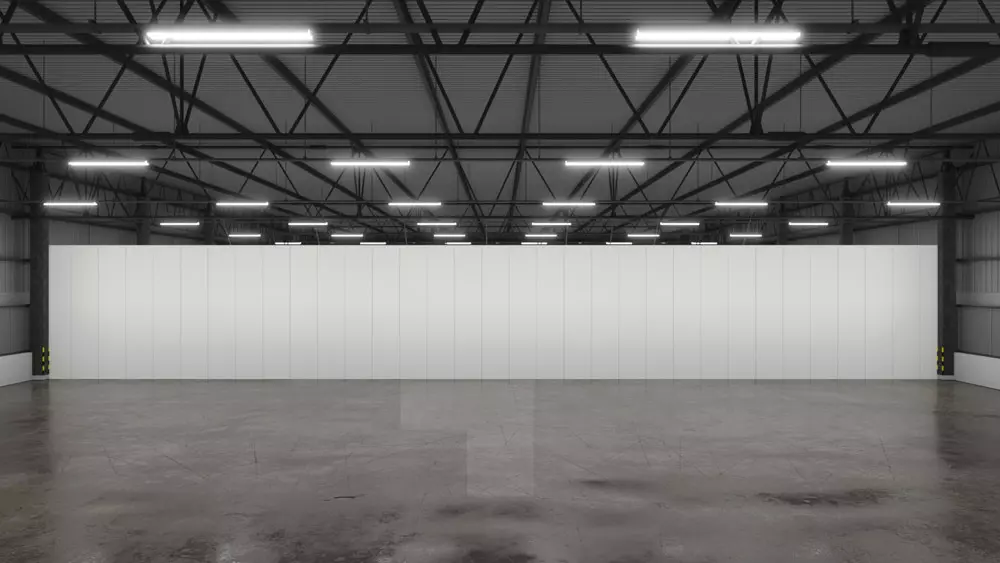


Whether you’re in charge of implementing a new process in a manufacturing facility, or you’re looking for a convenient, effective way to divide tenants in a commercial building, it’s likely you’ve heard of demising walls and industrial tall walls. Both demising walls and industrial tall walls are convenient construction components used to provide structure, sound barriers, and physical barriers in a range of building types. But if you’re looking into separating a large, commercial space, what is the difference between a demising wall and an industrial tall wall, and which option is best for your project?
Demising walls and industrial tall walls function in very similar ways. Both demising walls and industrial partitions are built to extend from floor to ceiling of a building and work to provide a solid barrier between one area of the building and another.
In general, demising walls are used to divide tenant spaces, whereas industrial tall walls create work and walk spaces in a factory, or provide enclosures in factories, warehouses, or commercial buildings. Both demising walls and industrial tall walls provide the solid structure necessary to create a barrier between one part of a building and another.
If the purpose of both a demising wall and an industrial tall wall is to provide a solid barrier between rooms or building tenants, then what is the difference between the two?
The only functional difference between a demising wall and an industrial tall wall is the level of fire protection. Demising walls offer a certain level of fire protection — a 1-hour fire rating is most common, though there are more stringent ratings. In the event of a fire, a demising wall with a 1-hour fire rating is built to contain and withstand a fire for at least one hour.
Depending on where you plan to install an industrial tall wall or demising wall, you may or may not need this level of fire protection. Here’s how to decide:
In general, you need a fire-rated demising wall to divide two separate real estate entities from each other, or as your building code requires. Otherwise, an industrial partition can offer all of the same benefits in terms of structure, support, and sound barrier, and often at a reduced cost when compared to a fire-rated demising wall. What’s more, many high-quality tall walls are prefabricated in dedicated manufacturing facilities where they can be shipped out and delivered to your building or jobsite in just days.
Industrial tall walls are ideal for applications like:
Industrial tall walls have a wide range of applications across manufacturing facilities, industrial warehouses, and commercial buildings. You can use an industrial tall wall in just about any space or application where a tenant needs to separate its workspace.
If you’re interested in industrial tall walls for your facility, the experts at Starrco can help. Our modular walls are built to suit your unique application, and our STARRMAX Tall Wall system is manufactured to suit applications with a need for floor-to-ceiling wall panels at heights of up to 30′. Contact our team for more information about our available pre-fabricated, modular industrial wall systems.